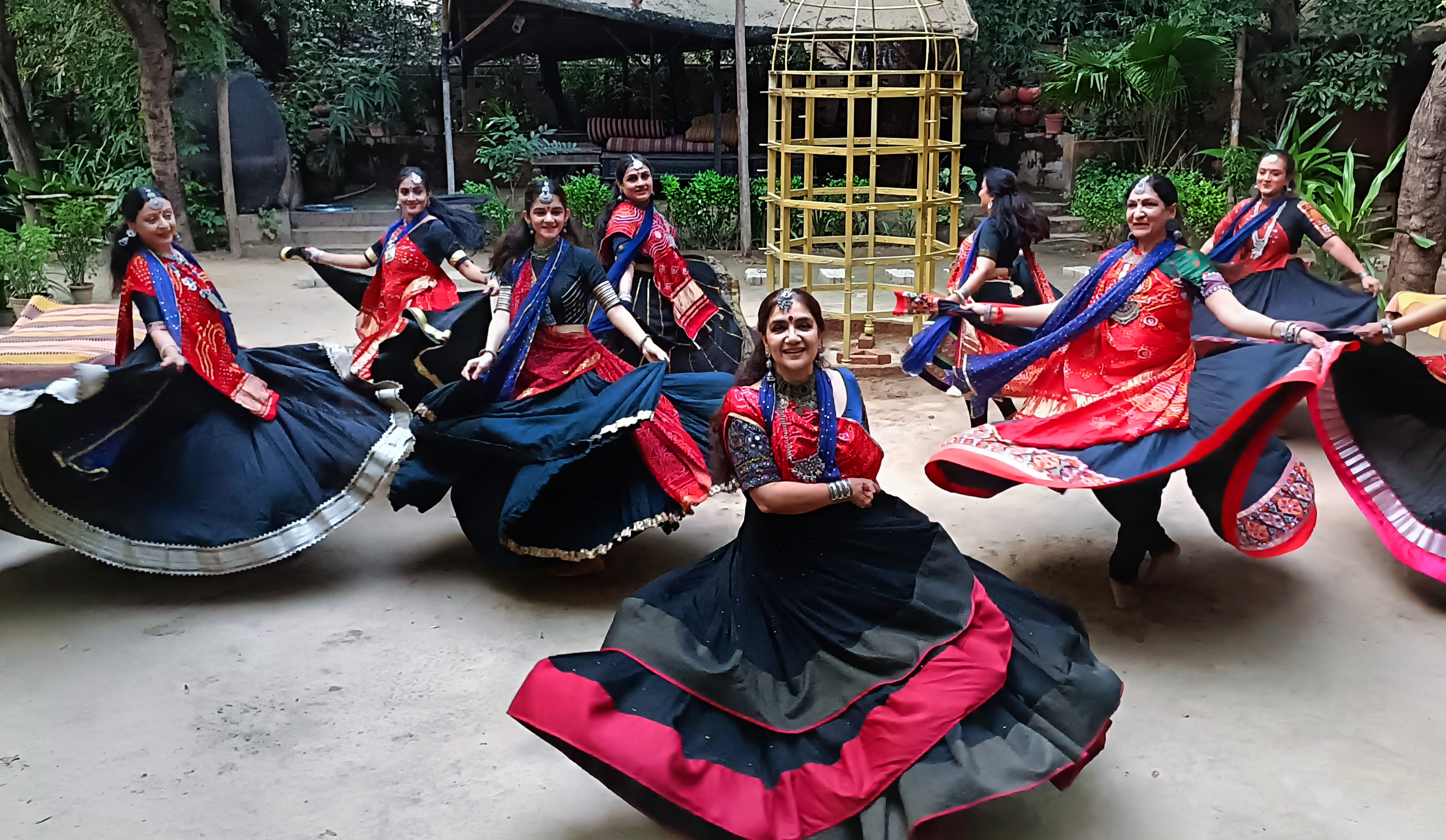.webp)
 Aasha Khosa
Aasha Khosa
Even atheists and agnostics would agree that Navratri, the nine-day festival celebrating the divine feminine energy called Shakti, or Maa Durga, is an empowering tool for Indian women and no other civilization or culture offers it to them.
The festival, celebrated differently across India – the most festive celebrations happen in West Bengal and some other Eastern parts of India – is symbolically and figuratively about the reverence and commemoration of the female energy, which the Hindu philosophy and science says is the source of creation and its management.
Giving a scientific explanation behind the concept of female divinity so unique in Hindu culture, the Esha Foundation, led by the inner engineering Guru Jaggi Vasudev, says, “When we say “masculine” and “feminine,” we are not talking about the gender; we are talking about the basic qualities in existence, the polarities. The physical world can only exist between polarities – day and night, darkness and light, masculine and feminine, and male and female. Male and female manifest masculine and feminine qualities, not qualities by themselves.”
With the Indians moving across the country and the world for economic reasons, Durga Puja is no longer the exclusive celebration of Bengal and parts of Bihar and Assam. The Puja Pandals dot the country across States and it has become an Indian festival in every sense. I, for example, was brought up in a hilly area of Jammu where I saw the Puja celebration by the Bengali families of the engineers and staff working to build J&K's first mega hydropower project for the first time.
 BJP leader Smriti Irani playing Sindhoor Khela during Durga Puja
BJP leader Smriti Irani playing Sindhoor Khela during Durga Puja
Women making sounds to keep away the evil or dark forces, playing with sindhoor, and dancing with smoldering pots in their hands was too surreal a scene for a child. However, my daughter has no idea that Durga Puja is exclusive to Bengal; she has been going to the “Durga Puja” Pandal in the neighbourhood almost since she was born.
In North India, the festival is more about devotion and less of a celebration. Men and women keep fast and abstain from eating grains for nine days. Abstaining from certain foods is an individual's choice. For example, Prime Minister Narendra Modi lives off the coconut and plain water for nine days!
They pray to the Goddess for the well-being of the family. They also cultivate wheat grass in an earthen pot to symbolize the abundance showered by the Divine.
Gujaratis celebrate the festival with Garba - an all-night dance festival involving both men and women. It may be mentioned that Garba is on the UNESCO's Representative List of Intangible Cultural Heritage of Humanity. This recognition was given in December 2023.
 Sufi dancer rehearsing for Dandiya Nights
Sufi dancer rehearsing for Dandiya Nights
The festival concludes with the devotees’ worshipping nine young girl children – below the age of puberty – and feeding her. A devotee washes their feet, offers them dress and food, and seeks their blessings. The young girls with purer consciousness are considered an incarnation of the feminine divinity of Durga.
The Esha Foundation explains, “Navaratri is all about the different Devis. Some of them are very gentle and wonderful. Some of them are fierce, terrible, or horrifying. This is the only culture that worships women who bite your head off. This is because we did not want to surrender our intelligence, brilliance, genius, and other competence at the altar of good behavior alone. Good behavior will give you social access. If you do not have good behavior, society will reject you, but life will not reject you. If you are the only person on this planet, no one would be there to tell you what is good behavior. You behave well as a consideration for the people around you, but as a life it means nothing.”
It’s a paradox that in a culture where (Male) Gods turned to the Goddess as a last resort to rein in Mahishasur demon who was troubling them, evil practices like bride burning, female foeticide, and rape have crept in over some time.
ALSO READ: Mahatma Gandhi opposed Israel, asked Jews to return to live with Palestinians
The Navratri not only brings joy with its all-round festivities but also reminds society of the importance of women. It invokes the inner strength of Indian women to not only be worth worshipping but be prepared to become a Kali (the most fierce form of Goddess) to exterminate evil.
